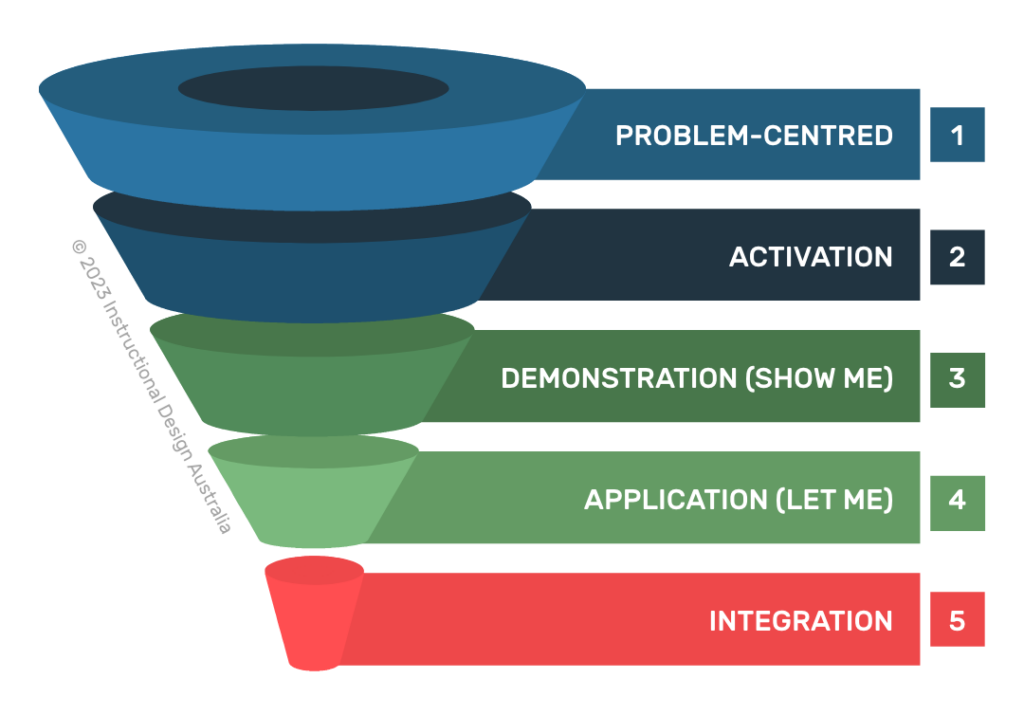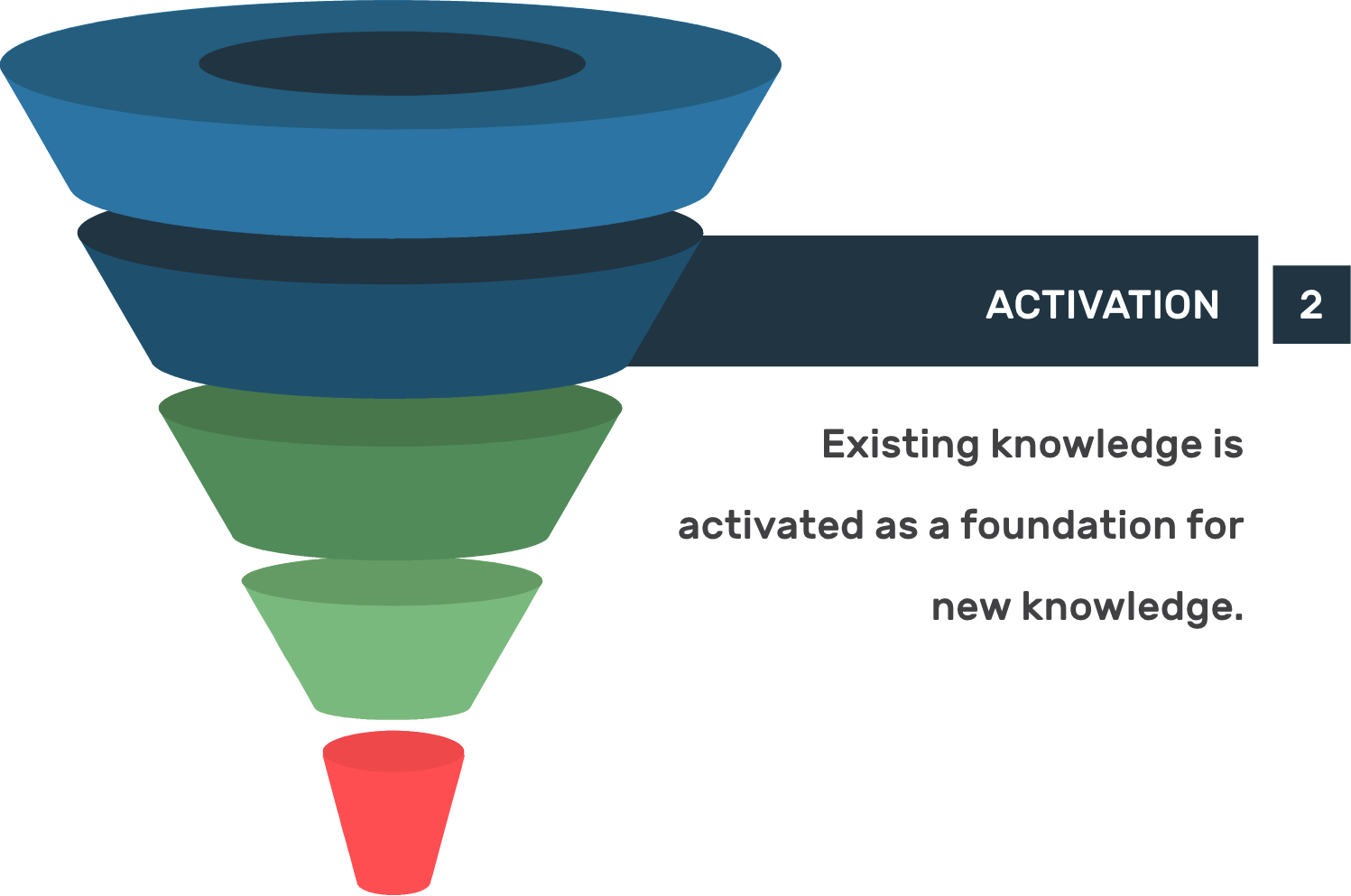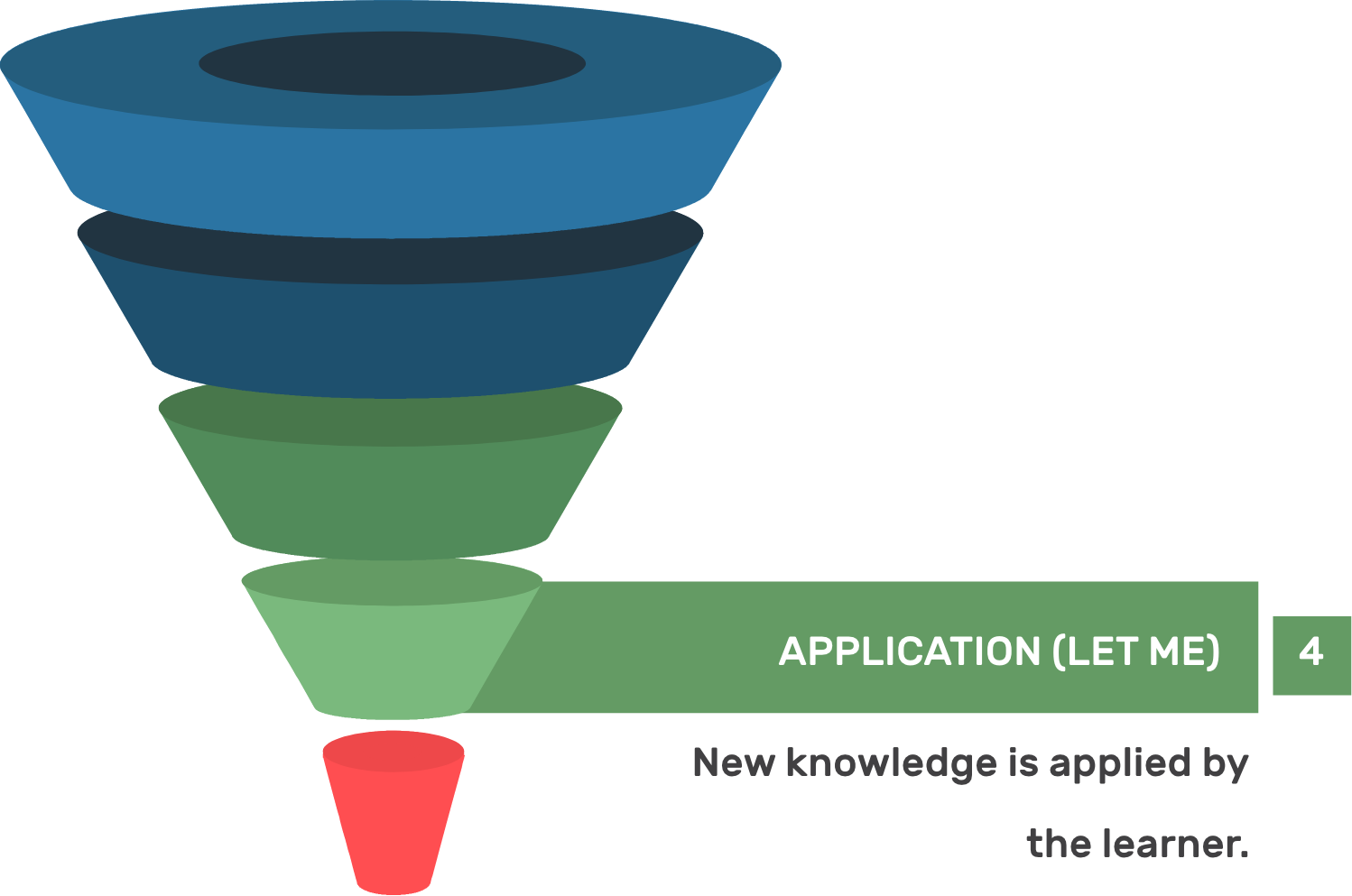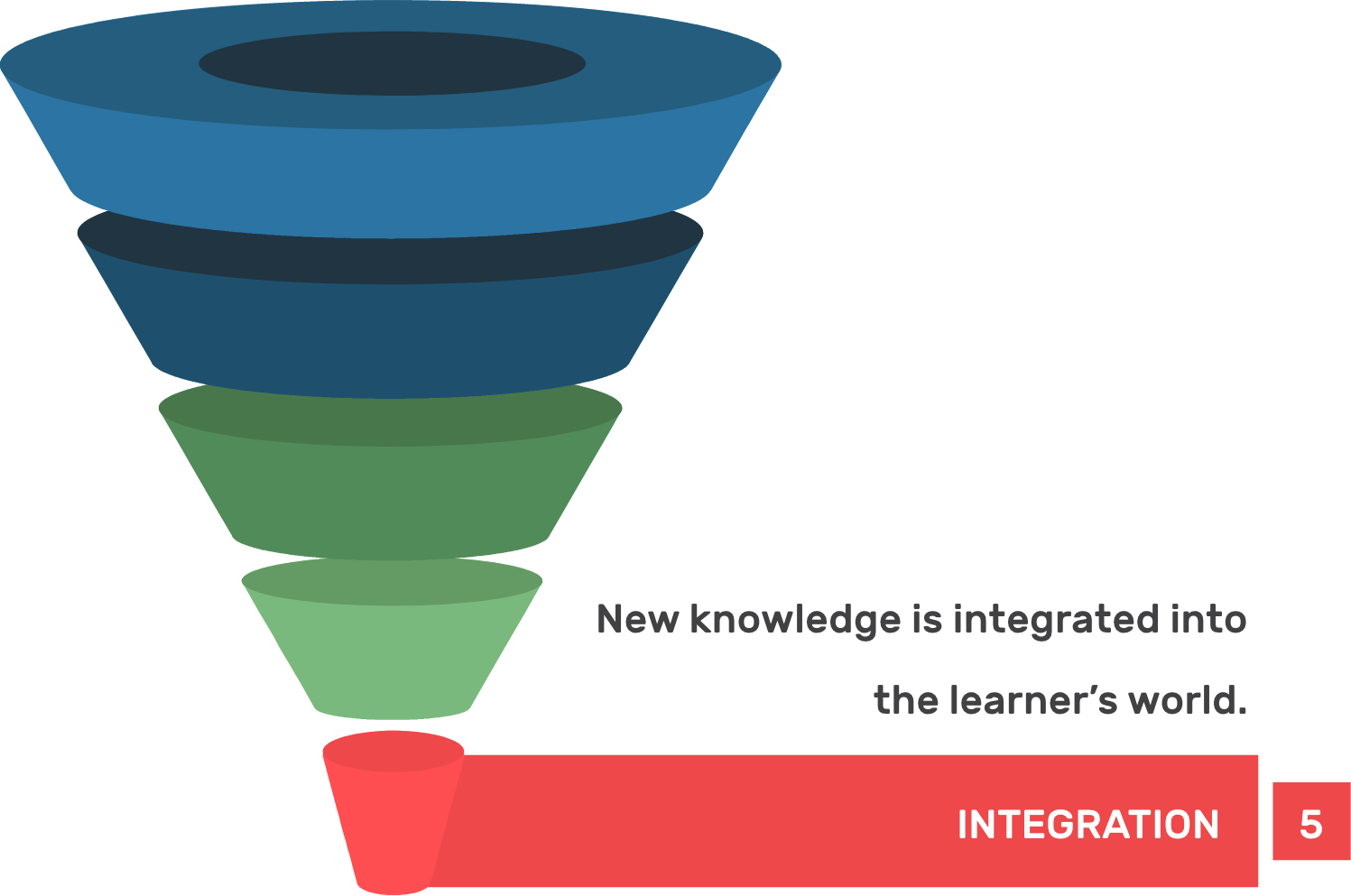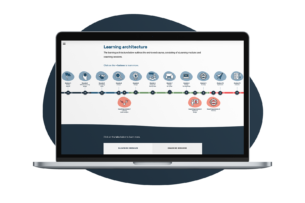Merrill’s Instructional Design Principles
A bit like lego…
Problem-centred learning supports constructivist theories – learners construct their own understanding by building on their previous knowledge and experiences. [2]
Problems may include simulation or situations that provide learners with contextualised, authentic learning experiences, allowing them to draw on existing knowledge to understand the problem, collect information from various sources and resolve the problem. [3]
During this process, learners develop a deeper understanding of key concepts while strengthening problem-solving skills such as analytical thinking, initiative and creativity. [4]
Identify where the learners are at before introducing new content to help them link and meld the ‘old’ with the ‘new’. Revise and activate learners’ previous knowledge on the topic to prepare them for building upon it (scaffolding).
If learners don’t have relevant experiences, provide them to ensure that they have a basic understanding of the topic before introducing complex concepts.
When delivering content, incorporate multiple demonstrations of the concepts where possible to provide context and deepen learners’ understanding of its application. Learners are more likely to understand how to apply their learning when information is presented with examples.
Multiple examples allow learners to compare different perspectives.
Use media that supports effective learning. Some forms of media may compete for learner attention – or be ‘noisy’, whilst others complement and strengthen learning (e.g. audio and relevant summary graphics). [5]
Engagement with learning is king here!
Application of knowledge to real-world contexts is a vital part of effective learning!
Ensure the opportunities for learners to practice skills are consistent with the learning outcomes.
Build learner confidence by initially providing guidance, and then gradually reduce support, allowing the learner to take charge and complete tasks independently.
Provide multiple opportunities to apply learning to a range of situations to consolidate learning. [6]
Let’s get personal – learners are motivated when they recognise their own progress.
This can occur when demonstrating or sharing their knowledge and skills to others, reflecting on their learning and transferring new meaning and understanding to their own lives. [7] Use embedding activities to support learning transfer.
When developing your next program, keep Merrill’s five instructional design principles top of mind to ensure your instruction is efficient and effective!
Click on the links below to learn more about instructional design.
- First Principles of Instruction
- What is Instructional Design?
- Understanding Instructional Design
- What Do Instructional Designers Do?
- What are the differences between Educational Design, Learning Design and Instructional Design?
- The Instructional Design Method
- The History Of ADDIE
Read more of our blog articles here.
[1] [7] Merrill, M. D. (2002). First principles of instructional design. Educ. Technol., Res. Dev. 50: 43–59.
[2] Bayat, S. (2012). Effects of problem-based learning approach on cognitive variables of university students. Elsevier.
[3] Mossuto, M., (2009). Problem-based learning: Student engagement, learning and contextualised problem-solving.
[4] Radford University (n.d.). Problem Solving, Critical Thinking, and Analytical Reasoning Skills Sought by Employers. Retrieved from https://www.radford.edu/content/cobe/innovation-analytics/analytics/career-prep/report-e.html
[5] Mayer, R.E. (2001). Multimedia learning. London: Cambridge University Press.
[6] Merrill, M.D., Tennyson, R.D. & Posey, L.O. (1992). Teaching concepts: An instructional design guide (2nd Ed.). Englewood Cliffs, NJ: Educational Technology Publications.
FAQs
In a nutshell, Merrill’s principles highlight that learning is promoted when:
- Learning is problem-centred and learners are engaged in solving real-world.
- Existing knowledge is activated as a foundation for new knowledge.
- New knowledge is demonstrated to the learner.
- New knowledge is applied by the learner.
- New knowledge is integrated into the learner’s world.
When developing your next program, keep Merrill’s five instructional design principles top of mind to ensure your instruction is efficient and effective. Apply Merrill’s principles by:
- Using problem-based learning to engage learners in real-world problems.
- Activating existing knowledge before introducing new content to help them link and meld the ‘old’ with the ‘new’.
- Incorporating multiple demonstrations of the concepts where possible to provide context and deepen learners’ understanding of its application.
- Ensuring to include opportunities for learners to apply their new insights and practice skills, such as scenarios and simulations.
- Helping learners to integrate their new understanding and skills into their own lives through embedding activities to support learning transfer.
Merrill’s five principles of instruction are:
- Problem-centred
- Activation
- Demonstration
- Application
- Integration
Advantage: A clear and concise model for the creation of a learning solution.
Disadvantage: Design-focused only – it does not incorporate how to identify learning needs or to evaluate the program for improvement.
The goal of Merrill’s principles of instruction is to provide a framework for designing effective instruction to maximise learning.
Contact Us
Contact Details
Office
E: info@discoverlearning.com.au
Ph: 1300 528 736
Michael Peart
E: michael@discoverlearning.com.au
Ph: 0434 075 231
Bianca Schimizzi
E: bianca@discoverlearning.com.au
Ph: 0416 013 623

